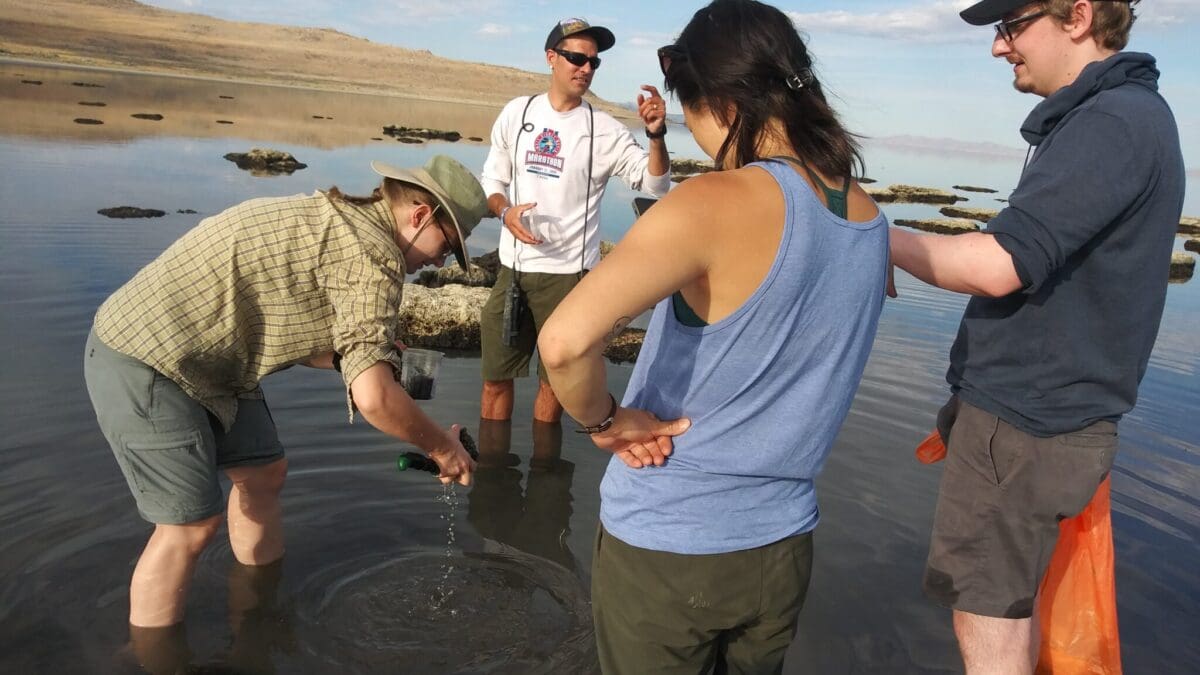Environment
Move over, brine shrimp: Scientists discover new animal living in the Great Salt Lake

A team of researchers from the University of Utah collects samples from a survey site on the Great Salt Lake where nematodes, also known as roundworms, were found. Photo: Courtesy of Michael Werner, University of Utah via Utah News Dispatch
By: Kyle Dunphey, Utah News Dispatch
If two’s company and three’s a crowd, the Great Salt Lake is getting crowded after scientists discovered a species of nematode, known also as a roundworm, making it just the third multicellular animal known to inhabit the lake.
Brine shrimp and brine flies were the only other multicellular animals thought to be living in the Great Salt Lake’s water, but a study published this week by researchers at the University of Utah suggests nematodes inhabit the southern arm of the lake.
The discovery opens “several new lines of inquiry into Great Salt Lake’s largely hidden web of life,” reads a news release from the university.
Scientists have “long suspected” the worms lived on the lake, according to the news release, but they evaded researchers. In 2021, biology professor Michael Werner began his “worm-hunting” study, setting up sites near Fremont and Antelope islands.
Postdoctoral researcher Julie Jung then led a team to gather samples at the sites, accessing them via kayak at first, then by mountain bike as the lake level dropped. They found thousands of worms living in the Great Salt Lake’s microbialites, deposits that resemble reefs and cover about 20% of the lakebed.
Nematodes are the most common animal phylum in the world, with over 250,000 species found in both marine and terrestrial ecosystems. According to the university, they are found in some of the world’s harshest environments — underwater, underground, arctic and arid.
But the recent discovery is the most saline environment inhabited by a nematode, according to Werner.
“Just what is the limit of animal life? What environments can animals actually survive? That captures some imagination about looking at other planets where we might find complex multicellular life,” Werner said.
The nematodes found on the lake could be an entirely new species, and the university says characterizing and naming them will require additional studies.
Like the brine shrimp, the fate of the newly discovered nematodes is threatened by the Great Salt Lake’s declining levels, which is exposing microbialites and impacting the insects and waterfowl that depend on them.
“Thus, there is a pressing need to understand this lynchpin community and the limits of their habitability,” the news release from the university reads.
















